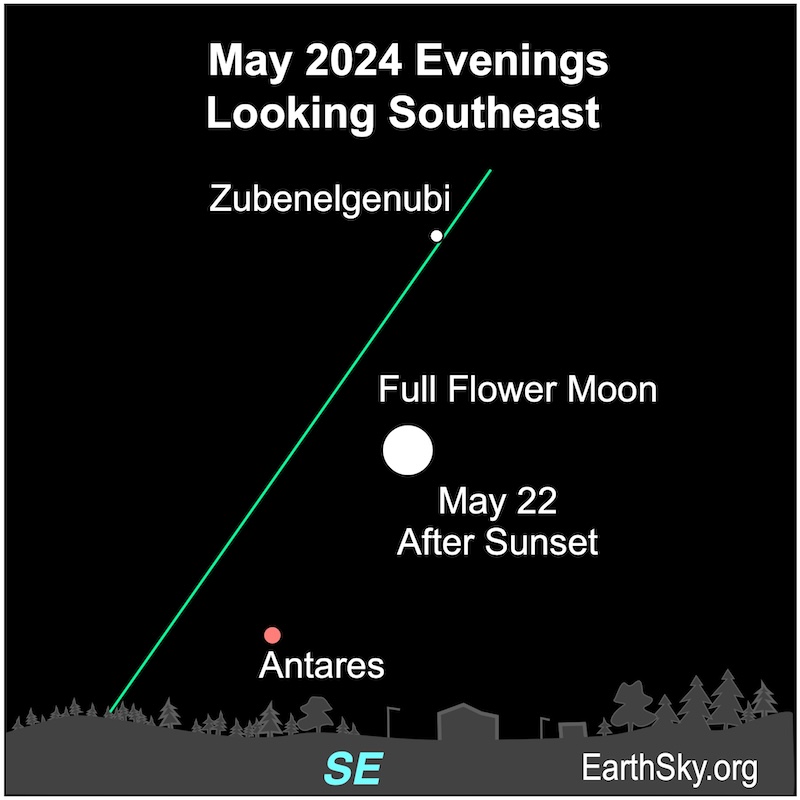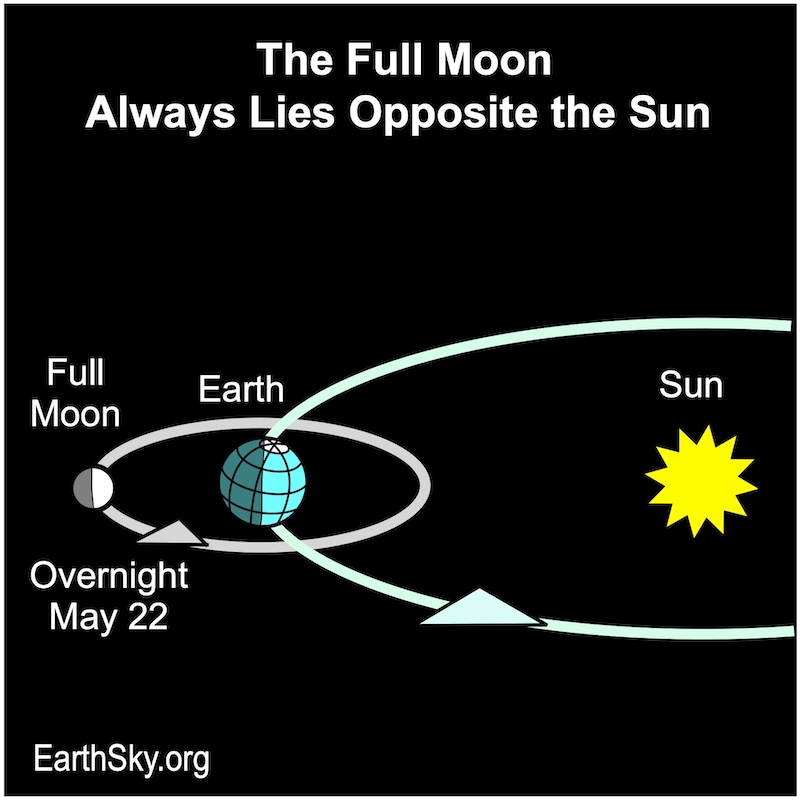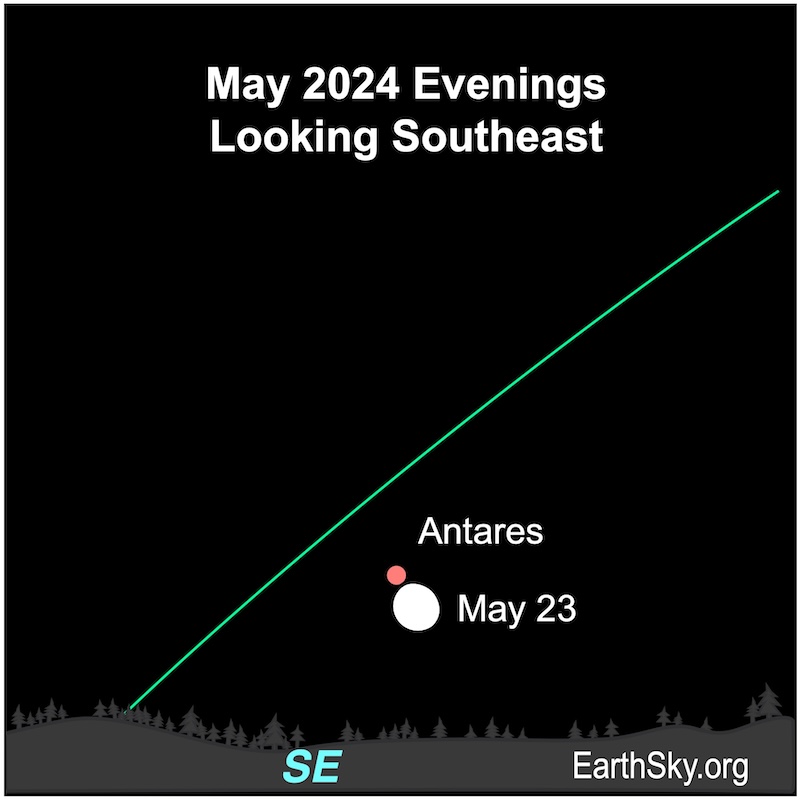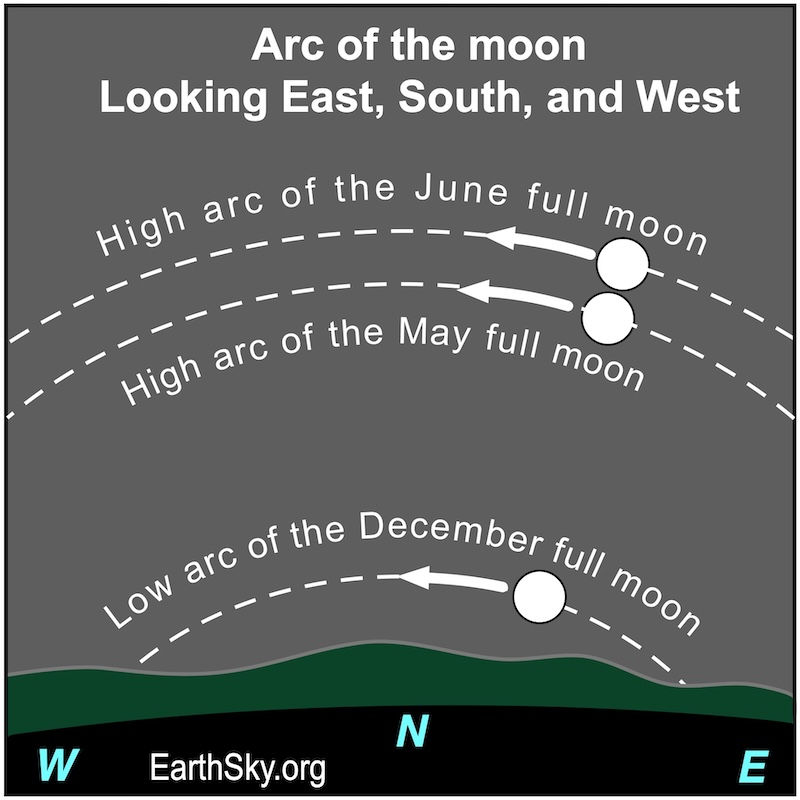
When and where to watch in 2024: Look for the bright, round moon rising low in the southeast after sunset on May 22. It reaches its highest point in the sky after midnight, and lies low in the southwest shortly before sunrise.
Crest of the full moon falls at 13:53 UTC on May 23. That’s 8:53 a.m. CDT on May 23 in central North America. So, if you live in central North America, your fullest moon falls a few hours after sunrise on May 23 and after it has already set. The rising moon in the southeast on May 23 will also appear full.

Moon looks full over 2 nights
At full moon, the sun, Earth, and moon align in space, with Earth in the middle. The moon’s day side – its fully lighted hemisphere – faces us. That’s why the moon looks full. Note that the moon will look round for a day or two around full moon. Because the May full moon occurs in the morning on May 23, the moon will look full on the overnights of May 22 and 23.

It’s the Flower Moon
All the full moons have nicknames. Popular names for May’s full moon include the Planting Moon and the Milk Moon, but the Flower Moon is the most common. As you might expect, the name Flower Moon recognizes the blooming of wildflowers and garden flowers, many giving an enchanting appearance in the light of May’s full moon.
Arc of the May full moon
The moon’s arc across our sky varies from month to month and from season to season. Every full moon rises along the eastern horizon, opposite the sun as it sets in the west. Every full moon arcs across the sky throughout the night and sets along the western horizon around dawn.
For us in the Northern Hemisphere, the arc of May’s full moon is lower than the paths of the full moons since December, but higher than the next one which falls on June 21 in North America.

For those folks in the Southern Hemisphere, the full moon’s arc across the sky is climbing higher with each successive month since December, and will continue to do so until the full moon nearest the June solstice.

The May full moon is in Libra
As seen from the Americas, the full moon on the evening of May 22 is located in the direction of the constellation Libra the Scales. Just before sunrise on May 23, when the moon nears its fullest, it lies near Libra’s eastern border with Scorpius the Scorpion. On the night of May 23, when it still looks full, it glows next to Scorpius’ brightest star, Antares.

Bottom line: The May full moon occurs in the morning of May 23, but looks full on the previous evening and as it rises on May 23.











